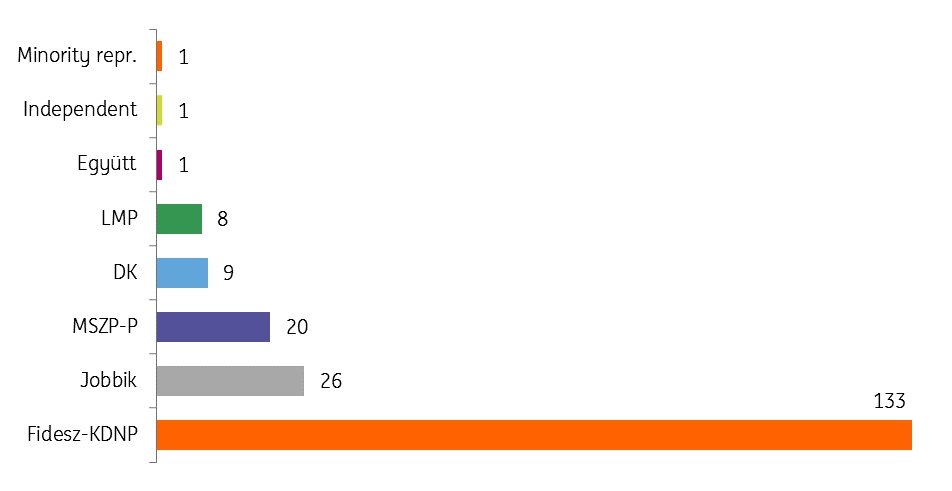Hungary: One week later
We have some clues about what the next four years will bring. The focus will be on demography and competitiveness. A new cabinet will be revealed around the end of May
When we assessed the initial results of the Hungarian general election (see: Hungary: All smoke, no fire and Hungary: Status quo remains), we noted that the results were not official. One week after the election, we have the final – though still not official – results, as some parties challenged the outcome at the National Election Commission.
Seats in the National Assembly

With a 70.22% turnout (the second highest ever), the right-wing Fidesz party headed by Viktor Orbán holds the absolute majority with 133 seats, slightly lower than the 134 seats expected earlier last week. In practice, however, the assembly has one national minority representative (a German one), who is tied to Fidesz, thus Fidesz is two representatives above the 2/3 threshold.
Policy focus
Orbán announced that the policy focus will shift to demography and competitiveness, so we can expect a lot of measures focusing on these topics. On one point we can be sure: Orbán is scrupulously ensuring that the fiscal stance will remain compliant with EU and Hungarian budget legislation, e.g. Maastricht criteria and the Hungarian debt rule.
Regarding the expected economic policies, Hungary's central bank published its Competitiveness Report in Autumn 2017, which could provide a sneak peek into the upcoming four-year economic plan. As Orbán pointed out, demography will be the cornerstone of policy in the coming years. Here are the key suggestions by the Hungarian National Bank on this topic:
- Further increase to the family tax allowances
- Raising the childcare benefit
- One-off lump-sum maternity/birth grant
- Enhancing the capacity of pre-primary and nursery schools
- Development of day-care services
- Supporting family-friendly working places
- Focusing on prevention in healthcare
So these could be on the menu for the government to improve demographic trends. When it comes to the general improvement of competitiveness, the central bank’s Competitiveness and Growth book can give a good indication about what to expect. Cutting taxes on labour, upgrading the public work scheme, reducing tax avoidance, increasing R&D funding, more e-governance and improving education. It is quite a long list and we are not even close to the full list suggested by the NBH.
Formation of the new government
We will come closer to a solution when Orbán announces his cabinet with new faces and a new structure, as he has highlighted. The official announcement is expected within three weeks after the first session of the new Parliament, 7-8 May.
Download
Download snap